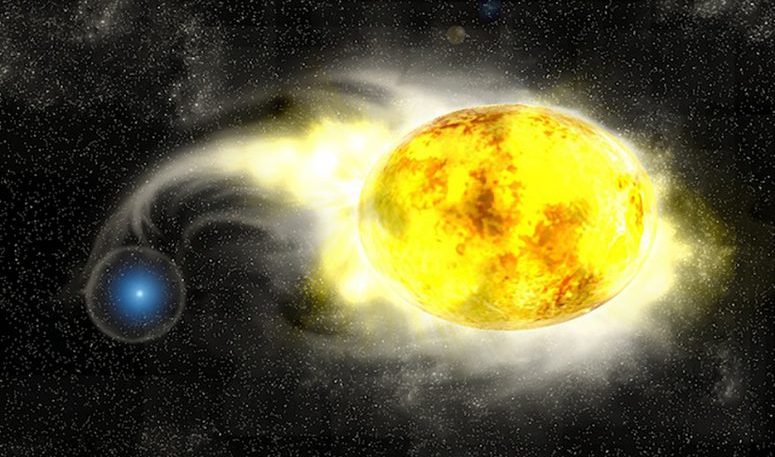(CNN) — Stars experience very violent lives that usually end in dazzling explosions, and scientists have tried for years to determine what happens to massive stars just before this bombastic finale.
Now, an unusual supernova is helping researchers piece more of that stellar puzzle together.
An international team of researchers used NASA’s Hubble Space Telescope to observe a massive yellow star 2.5 years before it exploded in a supernova. The star was located 35 million light-years from Earth in the Virgo galaxy cluster.
These cool yellow stars are usually enveloped by hydrogen at the end of their lives that cloaks the heated blue interior of the star. When this particular star exploded, it was missing that hydrogen layer.
That should make the star extremely blue, signifying how hot it is. Instead, the star was unusually cool prior to the explosion.
“We haven’t seen this scenario before. It’s almost impossible for a star to be this cool without having hydrogen in its outer layer,” said lead study author Charles Kilpatrick, postdoctoral fellow at Northwestern University’s Center for Interdisciplinary Exploration and Research in Astrophysics in Illinois, in a statement.
“We looked at every single stellar model that could explain a star like this, and every single model requires that the star had hydrogen, which, from its supernova, we know it did not. It stretches what’s physically possible.”
The study published Wednesday in the Monthly Notices of the Royal Astronomical Society.
The researchers believe that in the years leading up to the supernova, the star must have somehow lost its hydrogen layer.
The death throes of a star
Kilpatrick is also a member of the Young Supernova Experiment that utilizes the Hawaiian Pan-STARSS instrument to observe supernovas upon explosion. The Pan-STARSS moniker is short for the Panoramic Survey Telescope and Rapid Response System, located at the University of Hawaii’s Institute for Astronomy.
The team noted supernova 2019yvr after it occurred and checked to see if Hubble had previously imaged this part of the sky.
“What massive stars do right before they explode is a big unsolved mystery,” Kilpatrick said. “It’s rare to see this kind of star right before it explodes into a supernova.”
Fortunately, Hubble had observed the star just a couple of years before it exploded. While the supernova appeared as it should, the star that produced it didn’t quite add up.
“When it exploded, it seemed like a very normal hydrogen-free supernova,” Kilpatrick said. “There was nothing outstanding about this. But the progenitor star didn’t match what we know about this type of supernova.”
As the scientists continued to study the supernova, they discovered that the exploded star’s material moved through the local environment and crashed into a large hydrogen mass.
The team believes this was the missing hydrogen previously kicked out by the star.
“Astronomers have suspected that stars undergo violent eruptions or death throes in the years before we see supernovae,” Kilpatrick said. “This star’s discovery provides some of the most direct evidence ever found that stars experience catastrophic eruptions, which cause them to lose mass before an explosion. If the star was having these eruptions, then it likely expelled its hydrogen several decades before it exploded.”
There is another possibility presented in the new research, which suggests that a smaller companion star may have actually pulled the hydrogen layer away from the star that exploded.
Until they can search for a potential companion star, which can’t happen until the brightness of the supernova fades some 10 years from now, the mystery persists.
However, these findings are helping researchers learn more about the strange stars waiting to be discovered throughout the universe.
“Unlike its normal behavior right after it exploded, the hydrogen interaction revealed it’s kind of this oddball supernova,” Kilpatrick said. “But it’s exceptional that we were able to find its progenitor star in Hubble data. In four or five years, I think we will be able to learn more about what happened.”
(Copyright (c) 2024 CNN. All Rights Reserved. This material may not be published, broadcast, rewritten, or redistributed.)

